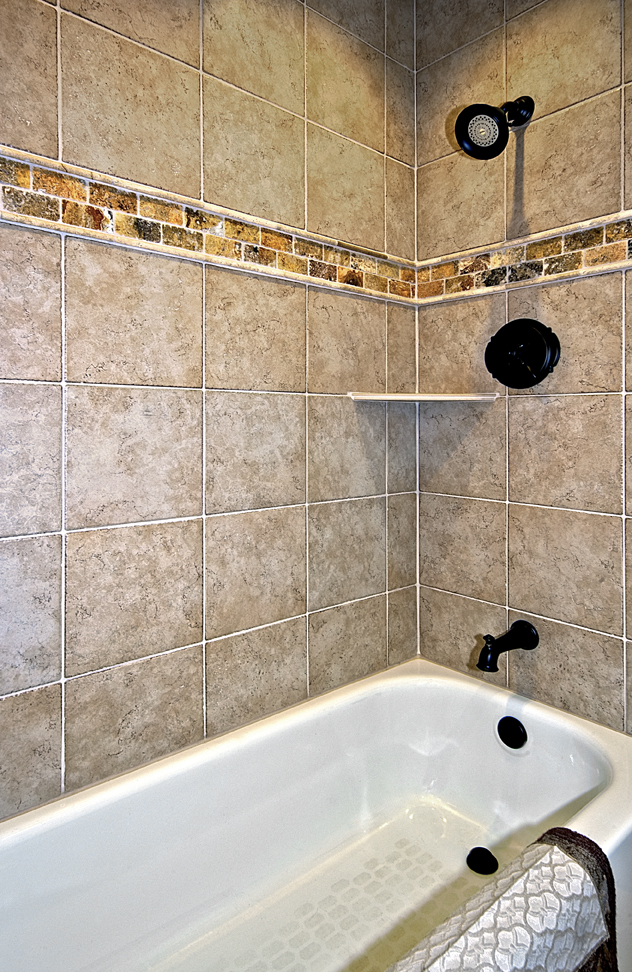Check out How to snap off narrow strips of ceramic tile on a tile cutter video blog for a quick demonstration of a technique described below.
 Over the years I have done many bathroom remodels that included installation of numerous types of tile. Glazed ceramic “subway” tile is very popular for some types of kitchen remodels, shower and tub surrounds these days. Installing “subway” tile offers a few benefits over larger and denser tile. One major plus of a ceramic tile is that it is fairly easy to cut on a simple cutting board instead of a wet saw.
Over the years I have done many bathroom remodels that included installation of numerous types of tile. Glazed ceramic “subway” tile is very popular for some types of kitchen remodels, shower and tub surrounds these days. Installing “subway” tile offers a few benefits over larger and denser tile. One major plus of a ceramic tile is that it is fairly easy to cut on a simple cutting board instead of a wet saw.
One challenge I constantly faced with cutting ceramic tile on a cutting board is difficulty snapping off narrow strips. I’ve tried different techniques over the years, and the one I’m showing in this video offers a perfect solution. With a little practice this technique proved so useful that I’ve completed a number of ceramic tile jobs with just a tile cutter, polishing stone and an angle grinder.
The “trick”, if there is a trick, to getting a good clean snap with any ceramic tile is to score as deeply into the glaze as you can. The unglazed ceramic is actually remarkably fragile. The amorphous, or glass-like nature of the glaze is what binds the surface of the tile together. The glaze is a terrific binder, but has little rigidity or strength of its own. The combination of the ceramic mass and the binding of the glaze is what give tiles their strength, beauty, and versatility.
By scoring through the binding glaze, a snap is easy to achieve. In fact, some artists are very good at snapping curved cuts, using a glass-cutter to score the glaze.
The angle grinder is a part of most professional tile installers’ kit. These versatile tools have a lot of advantages for the pro; they are relatively inexpensive (like any tool, you get what you pay for), they can be mastered with just a little practice, and they can eat through a tile like it was a saltine cracker!
Amateurs and beginning DIYers may not be as enthusiastic to pick up an angle grinder. They can be scary to the inexperienced. To be honest, I have hardly ever seen an angle grinder in use that still had the safety guard installed. In actual practice, with a firm hand and a reasonable amount of caution, the angle grinder is a very safe tool to use.
They are incredibly noisy, especially when cutting tiles. They raise a phenomenal amount of very abrasive dust. One method to reduce the dust is to use the wheel to deeply score the glazed side of the tile, rather than cutting all the way through. The scored tile can be snapped over a pencil or dowel.
A more amateur friendly power tool option is the oscillating multi-tools that are appearing on the market. These are not as intimidating to use as the angle grinder. They are also less powerful, so the cut will take a little longer, but it is still much more convenient than setting up the wet-saw.
The most appealing aspect of the oscillating tool is the apparent lack of dust. The diamond cutting attachment will create just as much dust as the angle grinder, but most of the dust flies a few millimeters and settles back on the work area, rather than being flung into the air (and into your wife’s favorite soap dish) like the angle grinder.
For more DIY tips and remodeling ideas, visit our blog.
